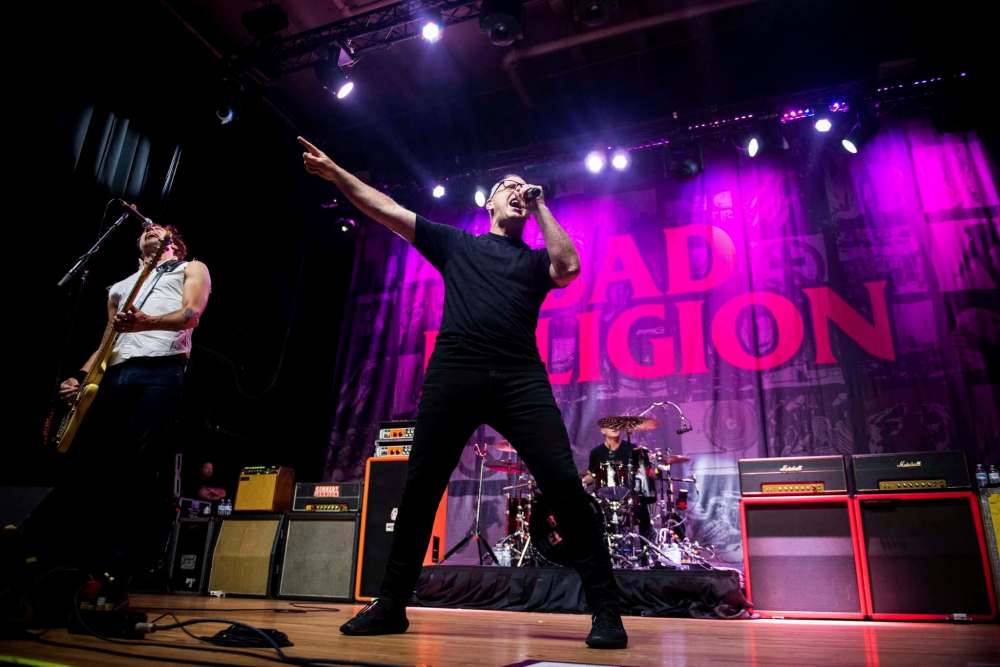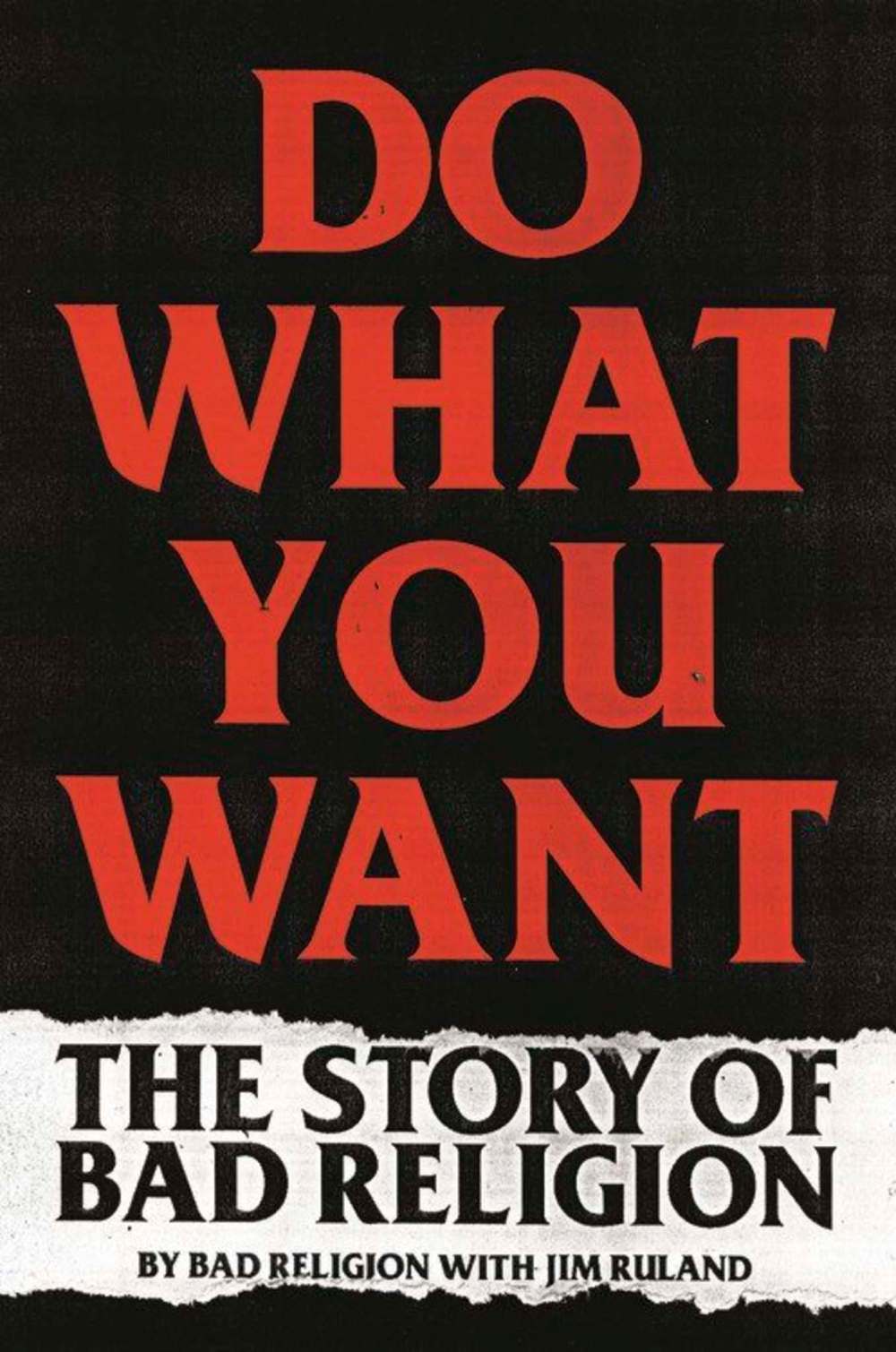A higher calling
Bad Religion ruminate on a legacy of four decades playing punk rock
Advertisement
Read this article for free:
or
Already have an account? Log in here »
To continue reading, please subscribe:
Monthly Digital Subscription
$1 per week for 24 weeks*
- Enjoy unlimited reading on winnipegfreepress.com
- Read the E-Edition, our digital replica newspaper
- Access News Break, our award-winning app
- Play interactive puzzles
*Billed as $4.00 plus GST every four weeks. After 24 weeks, price increases to the regular rate of $19.00 plus GST every four weeks. Offer available to new and qualified returning subscribers only. Cancel any time.
Monthly Digital Subscription
$4.75/week*
- Enjoy unlimited reading on winnipegfreepress.com
- Read the E-Edition, our digital replica newspaper
- Access News Break, our award-winning app
- Play interactive puzzles
*Billed as $19 plus GST every four weeks. Cancel any time.
To continue reading, please subscribe:
Add Free Press access to your Brandon Sun subscription for only an additional
$1 for the first 4 weeks*
*Your next subscription payment will increase by $1.00 and you will be charged $16.99 plus GST for four weeks. After four weeks, your payment will increase to $23.99 plus GST every four weeks.
Read unlimited articles for free today:
or
Already have an account? Log in here »
Hey there, time traveller!
This article was published 12/09/2020 (1853 days ago), so information in it may no longer be current.
Few musical groups, let alone punk rock bands, are still going strong after 40 years. To mark the unlikely milestone, the members of southern California’s Bad Religion, past and present, got together with veteran punk rock journalist Jim Ruland to put their story down in their words and on their own terms.
Bad Religion came together in the San Fernando Valley in 1980 while the founding members were students in high school, cutting their teeth in the vibrant L.A. scene. After a strong debut with 1982’s How Could Hell Be Any Worse? the band nearly petered out following the release of a disastrous sophomore record. But the band came back stronger than ever with the release of Suffer in 1988.
Their subsequent string of records — which were released on guitarist Brett Gurewitz’s Epitaph Records and became synonymous with a burgeoning skatepunk scene — as well as successful European touring paved the way for the punk rock explosion of the 1990s and beyond.

“Without Suffer, Epitaph would have never gotten off the ground,” the band maintains, looking back on their legacy. “Without Epitaph there’s no Pennywise, no NOFX, no Rancid, and no Offspring. And without those bands there’s no punk explosion in ’94, no Vans Warped Tour in ’95, and no Hot Topic (perhaps not a bad thing).”
Immodest? Perhaps. Inaccurate? Not in the least. (The cultural and artistic merits of any of the aforementioned bands and commercial entities are certainly debatable in and of themselves — but that’s another story altogether.)
Along with singer Greg Graffin, who has been the frontman of the group since Day 1, Bad Religion has featured a large cast of players over the past four decades. Bass player Jay Bentley has been in the lineup for the bulk of the time while Gurewitz, who continues to run the wildly successful independent Epitaph label today, is back in the fold after stepping away from the band to focus on the label during the ’90s. Brian Baker, a member of influential groups such as Minor Threat and Dag Nasty in the 1980s before joining Bad Religion in 1994, remains in the mix today.
These four core members provide the bulk of the narrative voice throughout Do What You Want, though all members chime in from time to time, with the notable exception of Greg Heston. A member of influential L.A. punkers the Circle Jerks, Heston had been involved with Bad Religion, as a fan and then member, from the early days, though he left the band in 2013. (Heston’s input would be illuminating, but apparently he chose not to participate in the project.)
Each member’s contributions are thoughtful and well-spoken. This should come as no surprise, as Bad Religion is often heralded as one of the “smartest” bands in punk rock. Graffin is an author in his own right who holds a PhD in evolutionary biology, while Gurewitz’s acumen as an entrepreneur and producer is unparalleled in the punk world. Ruland brings the project together, adding an encyclopedic knowledge of southern California’s punk scene, which provides valuable context to where Bad Religion came from and how the band’s success impacted the scene as time went on.
Principally, Do What You Want acts, like other “authorized biographies,” as a means of cementing the group’s legacy. However, those interviewed are not shy about expressing regret or misgivings regarding some of the band’s decisions over the years. Likewise, many of the members are candid about their struggles with drugs and alcohol, not least Gurewitz, whose battles with addiction are likely the most widely publicized of the group.

At the same time, Do What You Want should not be mistaken for a critical exploration of the band’s influence, both artistic and commercial. Considering the impact that Bad Religion and Epitaph had on punk in the 1990s, an in-depth objective analysis is certainly warranted. Regardless, the writing is engaging and detailed throughout. Fans of the band and punk rock in general would be wise to give it a read.
Sheldon Birnie is a Winnipeg writer and reporter with an interest in underground music.


